Reading questions on converting negative voltages to positive ones it has left me with a question that I can't seem to work out. The circuit looks like this:

But you only have the one going to the inverting input. My question is:
When inputting a positive voltage it doesn't change/very slightly change. So do you have to implement something else for when the voltage is positive?
EDIT: Image borrowed from Kortuk's answer here
R
___
.------|___|----.
| |
| |
| |
| VCC |
| + |
R | | |
___ | |\| |
Input -|___|----------o-------|-\ | Output
| >----o----
.------|+/
| |/|
| |
=== ===
GND GND